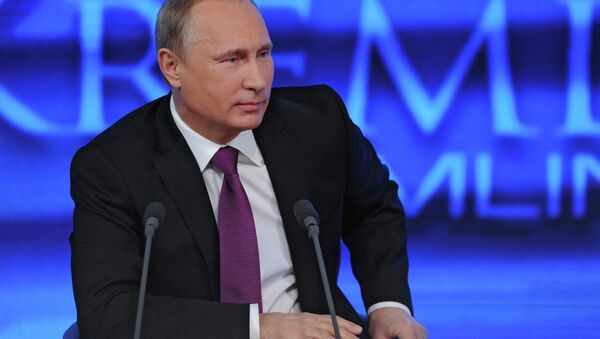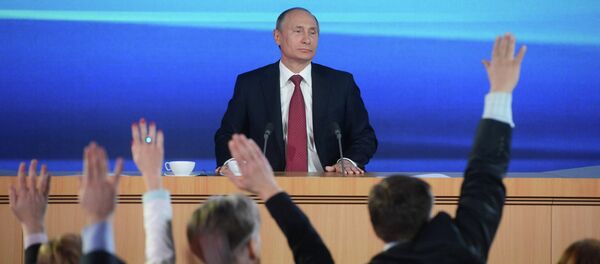“I hope that recent foreign currencies’ slump and strengthening of our ruble will continue. Is it possible? Yes, it is possible,” Putin said during a press conference.
According to Putin, the Russian authorities are planning a series of measures that proved successful back in 2008.
On Tuesday, the Central Bank of the Russian Federation increased its key interest rate from 10.5 to 17 percent effective immediately in an attempt to limit substantially increased ruble depreciation and inflation risks.
The Central Bank’s decision was made after a so-called “black Monday”, when Russian ruble suffered its sharpest decrease in 16 years. At the end of the day Monday, one dollar cost 64 rubles, while one euro was worth 79 rubles, the lowest level since 1998.
Following the Central Bank’s measures, by Tuesday evening Russian ruble strengthened its positions against US dollar, so on Wednesday one US dollar cost 59.6 rubles.
Russian economy is now facing a backlash from Western sanctions that were imposed on Moscow against its alleged involvement in the Ukrainian crisis, although Moscow has repeatedly denied those claims.
Another reason for a downturn in Russian economy has been a sharp decline in oil prices, as the country's budget is highly dependent on energy exports.
The Russian currency has lost over half its value against the dollar since July, prompting the Central Bank to hike interest rates to 17 percent.
In October, the Russian Finance Ministry sought to calm the nation by saying it was ready to disburse some 500 billion rubles ($ 12.4 billion) in funds from the nation's safety net Reserve Fund, provided that oil prices and the dollar-ruble exchange rate remain at current levels.



